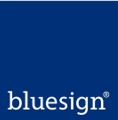 The 2022 revision considers new scientific knowledge on the toxicological and ecological profile of substances, new legal classification of chemical substances, new legal consumer safety limits, revised risk assessments following the bluesign® CRITERA for chemical assessment, feedback from experts of the Chemical Experts Group as well as new analytical standards.
The 2022 revision considers new scientific knowledge on the toxicological and ecological profile of substances, new legal classification of chemical substances, new legal consumer safety limits, revised risk assessments following the bluesign® CRITERA for chemical assessment, feedback from experts of the Chemical Experts Group as well as new analytical standards.
Important to know:
A usage ban for enzymes in powder form is defined. Enzymes are used in textile auxiliaries for pretreatment and dyeing as well as in denim laundries. With the use of enzymes resource savings (water and energy) can be realized. For the reason that enzymes are strong inhalative sensitizers powder based types will be no longer bluesign® APPROVED.
From July 2024 articles finished with PFAS/PFC chemistry – typically used for DWR finishing – will be phased out from the bluesign® GUIDE (the search engine for bluesign® APPROVED textiles and trims). Only for very exceptional cases (so-called essential uses as for example very special personal protective equipment, defined in coming EU regulation on C6-chemistry) an approval of textiles finished with C6-chemistry can be granted after July 2024.
BSBL (bluesign® SYSTEM BLACK LIMITS)
The bluesign® SYSTEM BLACK LIMITS (BSBL) specify threshold limits for chemical substances in finished chemical products such as auxiliaries or dyes. The compilation of substances in the BSBL includes all substances for which a precautionary hazard-based threshold limit is defined. The BSBL is publicly available and updated yearly.
BSSL (bluesign® SYSTEM SUBSTANCES LIST)
The bluesign® SYSTEM SUBSTANCES LIST (BSSL) specifies limits for chemical substances in articles (consumer safety limits). Only input stream management and application of the appropriate processes in manufacturing can ensure BSSL compliance. The BSSL is publicly available and updated yearly.
bluesign® RSL (RESTRICTED SUBSTANCES LIST)
The bluesign® RSL is an extract of the BSSL and contains consumer safety limits and recommended testing methods for the most important and legally restricted substances in textile and leather articles and accessories. Brands and retailers can use this RSL as an orientation for the terms and conditions of purchase.
Bluesign Chemical Expert Group (CEG)
The Bluesign Chemical Expert Group has the following agenda:
• Overlook on regulatory affairs and evaluate relevance for textile and related industries
• Discuss substance candidates for restriction / ban
• Define limits and testing methods
• Keep chemical assessment up-to-date
• Drive Chemical Change Management
Members of the CEG are all product stewardship experts from bluesign® SYSTEM PARTNERS in the chemical industry. To support an independent decision-making, interested parties from other system partners as well as organizations and associations are invited to the annual CEG meeting.
The revised documents came into effect on July 1st, 2022. They replace the
• BSBL (bluesign® system black limits), version 3.0 from July 1st, 2021
• BSSL (bluesign® system substances list), version 12.0 from July 1st, 2021
• Bluesign® RSL, version 12.0 from July 1st, 2021
2022 revision of BSBL, BSSL, and RSL as well as the documents regarding the relevant changes to substances and limits can be found on the Bluesign website:
• BSBL v4.0
• BSSL v13.0
• bluesign® RSL v13.0
• BSBL v4.0 – Changes 2022
• BSSL v13.0 – Changes 2022
• bluesign® RSL v13.0 – Changes 2022
As a support for all bluesign® SYSTEM PARTNER companies, along with the RSL, a testing matrix to be used as a guide for appropriate testing of articles such as textiles is also available in template format in bluesign® CUBE.



